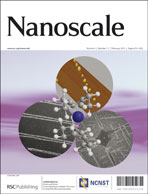Versatile functionalization of metal clusters is a key step in understanding the reactivity of protective monolayers. We here demonstrate that reaction of the outermost amino groups on (S)-/(R)-penicillamine-protected gold clusters with ethyl isocyanate readily modifies the chiral surface structure through carbamoylation. Interestingly, the clusters are electrophoretically separated by the size of the surface ligand, not by the size of the gold core, which is revealed by UV-vis, IR, and energy dispersive X-ray (EDX) spectroscopy as well as SAXS measurements. The ligand size (or length) is extended through additional reactions of the carbamoylated amino groups with isocyanate, while the chemical similarity in ligand structures is realized by their IR spectral similarity. Optical and chiroptical responses of the separated cluster compounds are thus overall similar to each other, but a close inspection reveals that the ligand size has a small but distinct influence on the chiroptical response of the gold clusters.

You have access to this article
 Please wait while we load your content...
Something went wrong. Try again?
Please wait while we load your content...
Something went wrong. Try again?


 Please wait while we load your content...
Please wait while we load your content...